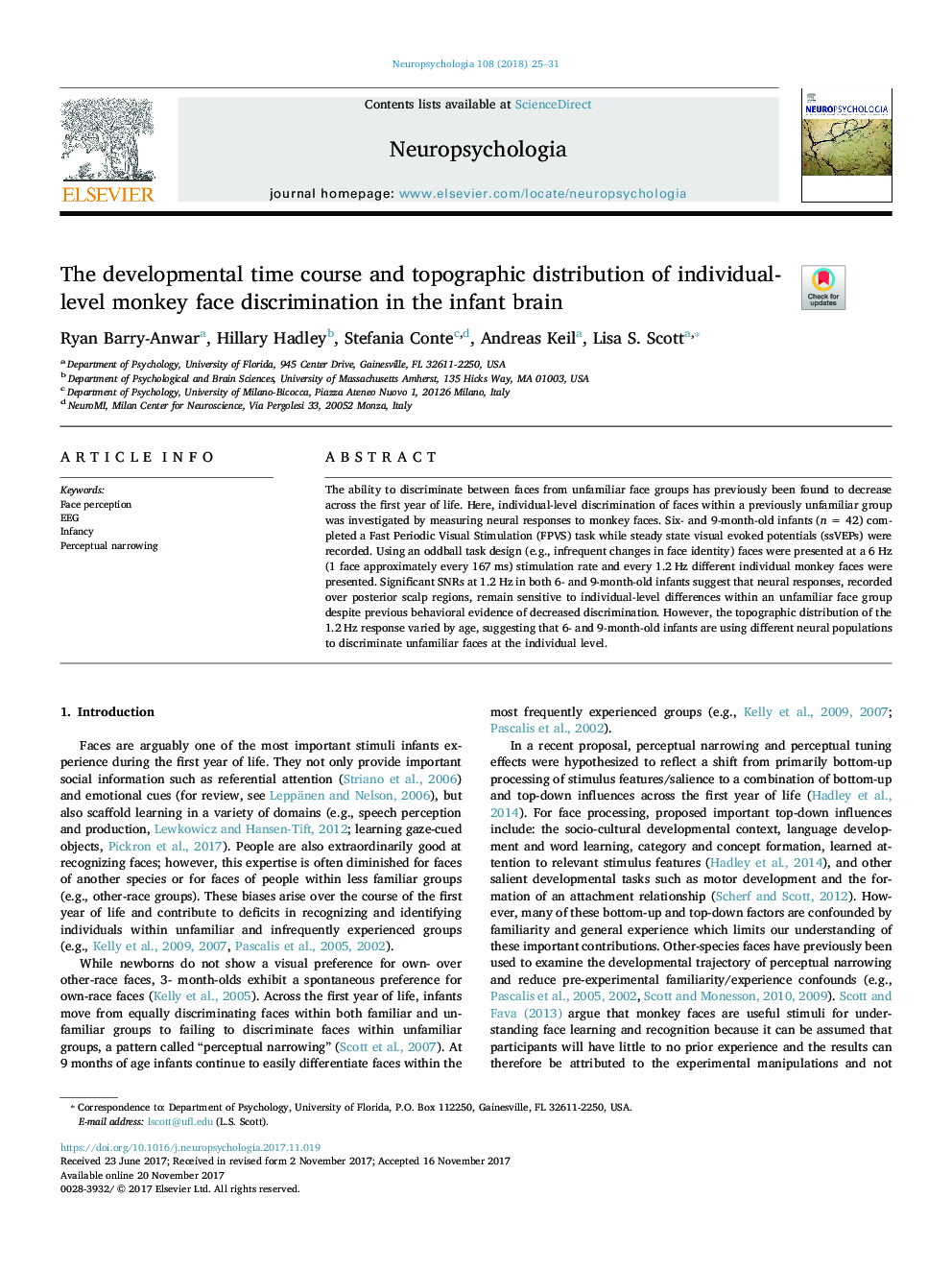| کد مقاله | کد نشریه | سال انتشار | مقاله انگلیسی | نسخه تمام متن |
|---|---|---|---|---|
| 7318135 | 1475547 | 2018 | 7 صفحه PDF | دانلود رایگان |
عنوان انگلیسی مقاله ISI
The developmental time course and topographic distribution of individual-level monkey face discrimination in the infant brain
ترجمه فارسی عنوان
دوره زمان توسعه و توزیع توپوگرافی میمون در سطح فردی، تبعیض در مغز نوزاد ایجاد می شود
دانلود مقاله + سفارش ترجمه
دانلود مقاله ISI انگلیسی
رایگان برای ایرانیان
کلمات کلیدی
موضوعات مرتبط
علوم زیستی و بیوفناوری
علم عصب شناسی
علوم اعصاب رفتاری
چکیده انگلیسی
The ability to discriminate between faces from unfamiliar face groups has previously been found to decrease across the first year of life. Here, individual-level discrimination of faces within a previously unfamiliar group was investigated by measuring neural responses to monkey faces. Six- and 9-month-old infants (n = 42) completed a Fast Periodic Visual Stimulation (FPVS) task while steady state visual evoked potentials (ssVEPs) were recorded. Using an oddball task design (e.g., infrequent changes in face identity) faces were presented at a 6Â Hz (1 face approximately every 167Â ms) stimulation rate and every 1.2Â Hz different individual monkey faces were presented. Significant SNRs at 1.2Â Hz in both 6- and 9-month-old infants suggest that neural responses, recorded over posterior scalp regions, remain sensitive to individual-level differences within an unfamiliar face group despite previous behavioral evidence of decreased discrimination. However, the topographic distribution of the 1.2Â Hz response varied by age, suggesting that 6- and 9-month-old infants are using different neural populations to discriminate unfamiliar faces at the individual level.
ناشر
Database: Elsevier - ScienceDirect (ساینس دایرکت)
Journal: Neuropsychologia - Volume 108, 8 January 2018, Pages 25-31
Journal: Neuropsychologia - Volume 108, 8 January 2018, Pages 25-31
نویسندگان
Ryan Barry-Anwar, Hillary Hadley, Stefania Conte, Andreas Keil, Lisa S. Scott,
